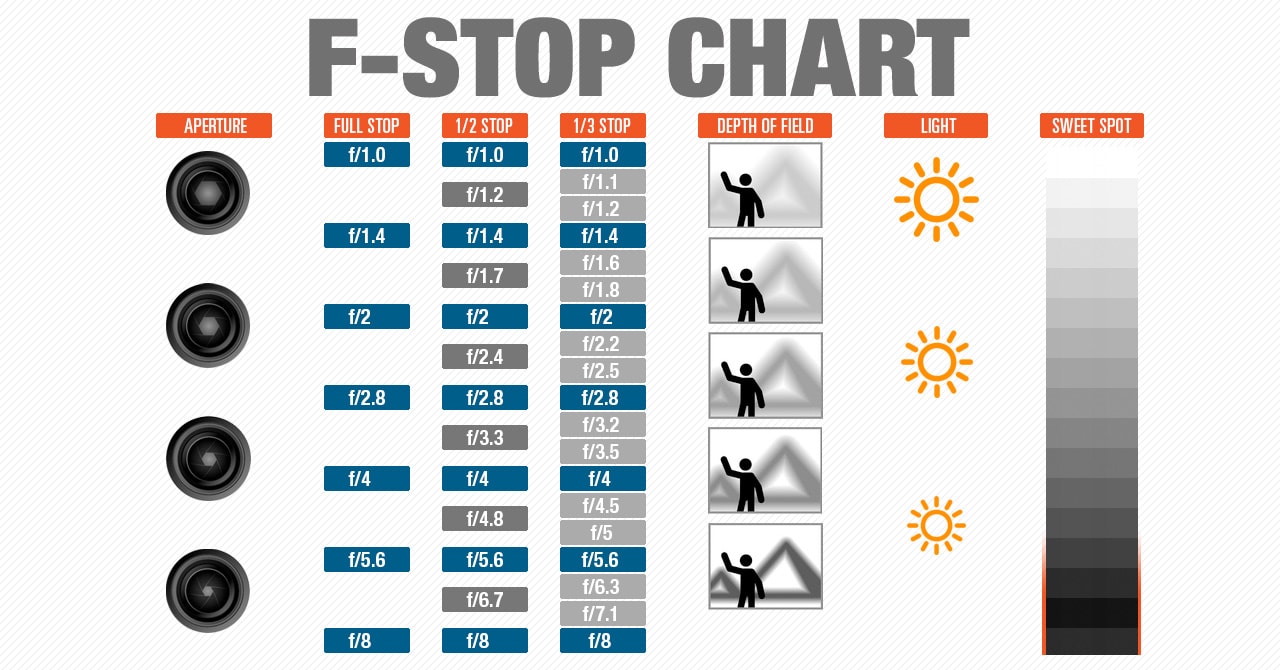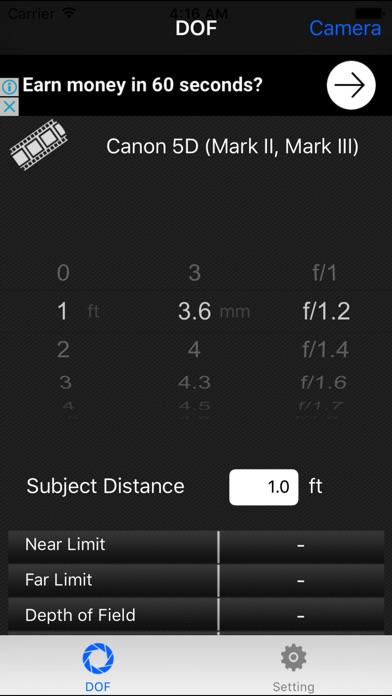
Here, a tripod or an effective image stabilization system can help. F stop works in an ideal world where a hundred percent of light passes through the lens to the imaging sensor. These apertures are also harder to use when hand-holding a camera, as the smaller the aperture the longer the shutter speed you need – and at some point you simply won't be able to hold it steady enough to produce a sharp image. What is a T-stop Well F stop is simply a mathematical calculation and calculates the change in amount of light passing through to the sensor. Increase the amount of light to 4000 lux (400 fc) and the difference is 2 f/stops. The example above is for 1000 lux (100 fc).
#F stop calculator iso
Small apertures, meanwhile, can make an effect known as diffraction more prominent, which also has a softening effect on images. Close the shutter speed one f/stop: 1/50s moves faster to 1/100s (halves the amount of light) at ISO 100 f/2.0 at 1/100s and ISO 100 is the same exposure as f/2.8 at 1/50s and ISO 100 Exposure according to lux or fc. Particularly wide apertures can also be tricky to use in bright conditions, as your camera may not be able to use a fast enough shutter speed to keep everything exposed correctly, which leads to overexposed images (unless you use an ND filter (opens in new tab)). Wide apertures are great for isolating subjects from their backgrounds, but images can be softer at these settings due to an effect known as spherical aberration. There are issues with using both very small and very wide apertures, so you need to judge this from scene to scene to understand which setting is most appropriate.
#F stop calculator how to
Read more: Cheat sheet: How to affect depth of field (opens in new tab) for proper exposure, calculate the comparable numbers for each alternative. Enter the film dimension and press calculate for the angle of view, 40 is normal. Keep in mind that f/stops, shutter speeds and film/digital sensor speeds are. Here you can calculate the minimum filter (size) clear aperture needed to fully illuminate the sensor of your camera. Depth of field does, however, also depend on other factors, such as where you focus in the scene. Enter the actual pinhole diameter and press calculate for the fstop 4. So, lets suppose we have a lens with a maximum aperture.

Depth of field concerns the extent to which different areas in the scene are rendered in focus, and a photographer will typically use a medium or small aperture to achieve more definition throughout. You can calculate it by dividing the f-stop of the lens by the square root of light transmittance. Whichever mode you use, changing aperture has an effect on depth of field. Opening up, meanwhile, means doing the opposite.

Ever hear these terms? Stopping down the lens or aperture simply means to make the aperture smaller, such as from f/8 to f/11.


 0 kommentar(er)
0 kommentar(er)
